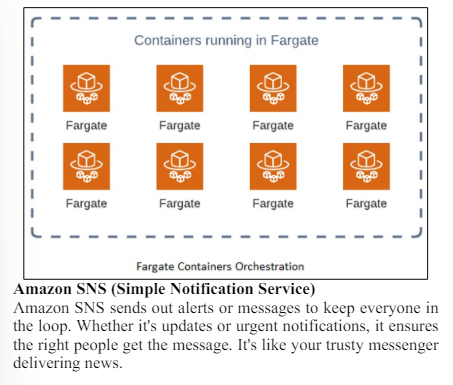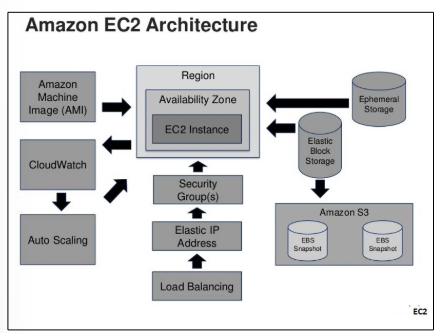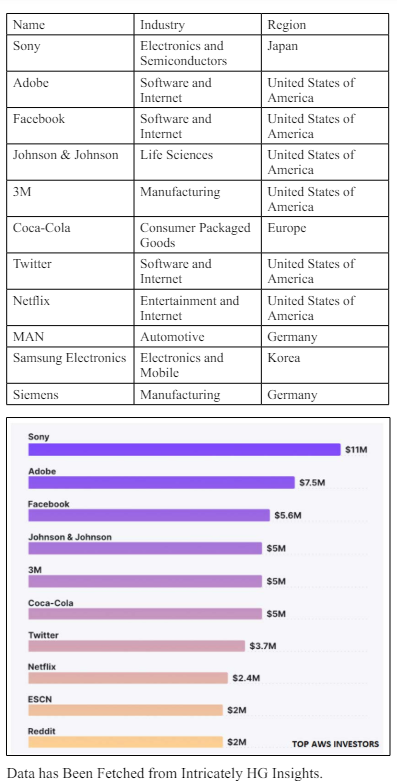Author(s): Narayana Challa*, Siva Karthik Devineni and Rajath Karangara
The advent of cloud computing has revolutionized the landscape of modern technology infrastructures, with Amazon Web Services (AWS) emerging as a dominant cloud player in this arena. The research explores AWS's nuances to unlock its full potential and highlight its transformative benefits for businesses and individuals. By analyzing various AWS features, the study scrutinizes AWS services from their scalability, reliability, and cost-effectiveness perspectives. Research seeks to identify key strategies and best practices for optimally using AWS resources, thus increasing operational efficiency while stimulating innovation. Investigation entails exploring AWS's technological architecture, security protocols, and integration capabilities. In sum, this research serves as an indispensable guide for stakeholders who wish to utilize all aspects of AWS functionalities, fostering a greater appreciation of its power to enhance digital transformation efforts and launch organizations into the era of technological development.
Nowadays, Public clouds provide a wide range of services that surpass the capabilities of on-premises or co-location data centers. These cloud services include physical and virtual machines, storage, virtual container environments, databases, serverless lambda functions, data analytics, IoT, and AI.
Today, thanks to its many advantages, cloud computing services have become an indispensable asset to work teams, entrepreneurs, companies, and organizations.
Below, We Outline Some of these Prominent Benefits of the Cloud
In 2002, Amazon started testing a service called "Amazon.com Web Service." This was like a tool for software developers to access information from Amazon's product list using specific computer code methods.
A year later, in 2003, Jeff Bezos, the big boss of Amazon, gathered his top team members for a meeting at his house. He wanted to figure out what Amazon was good at. They realized Amazon had a unique advantage in managing computer systems and infrastructure.
So, they got a brilliant idea. They thought of creating a kind of operating system for the Internet. Imagine your computer has an operating system like Windows or macOS that helps run everything smoothly. Similarly, they wanted to create tools to manage different parts of the Internet, like storing data, handling computing tasks, and managing databases.
Moving forward to 2009, Amazon expanded its services to Europe. They introduced tools like S3 (a way to store data), EC2 (a way to compute tasks), and other services like Elastic Block Store and Amazon CloudFront (a system to deliver content quickly acrossthe Internet). These new tools became popular among developers. Big companies like Dropbox, Netflix, and Reddit started using Amazon's services to grow their businesses.
In 2012, AWS held its first big event. After that, AWS started becoming popular worldwide. By 2015, they had made 4.6 billion dollars in sales, and by 2016, they had reached 10 billion dollars.
AWS boasts over one hundred tools and services, with new ones added regularly. Their tools assist with everything from storing files, hosting gigantic websites and building databases, connecting various parts of the Internet, and securely developing apps, as well as making sure everything stays in its place while remaining organized - not to mention using artificial intelligence technologies and even running customer support centers!
Amazon S3 is like a massive online storage locker where you can keep all your digital stuff. It's reliable, so you can trust your files to be safe. Whenever you need your files, fetch them! Amazon S3 buckets were initially available for free, but after the massive outreach by the tech world and companies' demand, they have created budget-friendly plans for the S3 buckets. More information can be found at https://aws.amazon.com/s3/pricing/ [2].
Amazon EC2 offers a menu of options tailored to different needs,
like a buffet where you can pick what suits your appetite. In
short, it's like a powerful supercomputer having a bare metal
cloud presence for you. The EC2 instance has a variety of options
available on the website to choose. You'll find choices with various
speeds, storage sizes, and ways to connect to get the right mix for
your projects. Think of it as customizing a car to fit your driving
style-speeding up or adding more space as you see fit.
You can go with:
• General Purpose.
• Compute Optimized Instance.
• Memory Optimized Instance.
• Storage Optimized.
• Accelerated Computing.
• HPC Optimized.
Feel the power of the Cloud and choose what's best for you.
Amazon RDS is like a well-organized digital file cabinet for all your data. It's designed to make sure your information is stored safely and efficiently. Whenever you are comfortable with the traditional MySQL, PostgreSQL, MariaDB, Enterprise Oracle, or the famous Microsoft SQL Server, all are available at Amazon On-demand RDS.
If you are thinking about Serverless Computing, Microservices, and Event-driver structure, Lambda is the right choice. With Amazon Lambda, you can run bits of code without worrying about the usual setup. It's like having a handy assistant who handles tasks automatically. Whenever something needs doing, Lambda's there to help [3].

Amazon S3, AWS Lambda, and DynamoDB collaborate to fetch weather information for a web app.
Amazon DynamoDB is all about fast and flexible data storage. Whether looking up information or adding new data, it's quick and responsive. Think of it like a super-fast library catalog that's always up to date.
Amazon VPC gives you your private corner of the AWS cloud. It's like having a personal workspace to build and test things without distractions. It keeps your projects separate and secure.
Amazon CloudWatch keeps tabs on your apps and services, watching for any hiccups. If something goes off track, it sends you a heads-up. It's like having a vigilant guard eyeing your digital space.
Amazon Fargate is a serverless compute engine provided by Amazon Web Services (AWS) that allows you to run containers without managing the underlying infrastructure. With Fargate, you can focus solely on deploying and managing your applications in containers without dealing with the complexities of server provisioning, patching, or cluster management.
Fargate simplifies the container orchestration process, enabling developers to manage and maintain their hosted AWS applications more efficiently [3].

Amazon Redshift is your go-to for analyzing heaps of data. It sifts through information to give you insights without the fuss. Imagine having a magnifying glass for your data; that's Redshift.
A More Detailed Analysis of Amazon EC2 Elastic Compute Cloud The Amazon Elastic Compute Cloud web service provides users with secure, resizable computing capacity. It makes it easy to access, obtain, and configure cloud resources.
Amazon Elastic Compute Cloud or EC2 is a web service allowing businesses to run their applications on the Amazon Web Services public Cloud. These applications are run by "virtual machines" on servers in AWS data centers. To use EC2, the developer creates an Amazon Machine Image (AMI), including an operating system, applications, and configuration settings. Next, the AMI is uploaded to the Amazon S3 storage service and registered with Amazon EC2 to create an "AMI ID."

Data is only retained while the EC2 instance is running. However, a developer can use an Amazon Elastic Block Store volume to retain them longer. Backups can also be done with Amazon S3. This allows users to control their computing resources precisely and run their applications on Amazon's computing environment. Amazon EC2 makes it possible to launch new server instances in just minutes. This allows capacity to be easily resized as needed [4].
Use the web interface or the Amazon EC2 API to increase or decrease capacity. Using AWS Auto Scaling, a developer can code an application to scale instances automatically. It also allows you to define Auto Scaling rules and groups of instances to manage them simultaneously
On AWS, software developers can use different command line tools and SDKs to deploy and manage their applications and services. The AWS Command Line is Amazon's prime code interface for the backend developers. Powershell tools easily allow the developers to manage Cloud services from Windows environments
The AWS Serverless Application Model has also been dedicated to testing the Lambda functions. AWS SDKs are available for platforms and development languages like Java, PHP, Python, Node.js, C#, iOS and Android, C++, and Ruby. Ruby [5].
The feature of Amazon API Gateway enables the development team to run, manage, and monitor APIs for better root and backend service functionality. AWS's powerful servers can easily handle thousands of full-fledged concurrent API calls.
The Amazon Elastic Transcoder service is dedicated to transcoding, and the AWS Step Functions helps visualize the workflows of microservices-based applications. Furthermore, it is possible to create integration and continuous delivery pipelines using AWS CodePipeline, AWS CodeBuild, AWS CodeDeploy, or AWS CodeStar.
Finally, computer code can be stored in Git repositories using AWS CodeCommit and assessed via AWS X-Ray to analyze Microservices-based applications.
Cloud computing power is the necessary tool to handle and process Big data more efficiently since it greatly facilitates access to the execution power required for processing big data. AWS offers several dedicated services for data processing online.
With AWS Glue, users can perform data ETL (Extraction, Transformation, Loading). The Amazon Elastic MapReduce is a Hadoop framework for processing large volumes of data.
With AWS's Kinesis service, users can efficiently process and analyze data that comes in as streams. Amazon Athena allows data analysts to query S3. Finally, Amazon QuickSight will enable them to visualize the data.
AWS CloudWatch is an advanced monitoring and logging service from Amazon Web Services (AWS), with features designed to track infrastructure resource utilization, software performance metrics, and network traffic analytics. Use it effectively to scale any AWS infrastructure using the below methods.
Amazon Cloudwatch provides real-time monitoring and alerting capabilities for retrieving logs and resource utilization reports directly from the security metrics. This is also the ideal wayto monitor logs that could indicate resource availability or performance issues that need immediate resolution. Review your logs regularly to spot potential problems that quickly impede resource performance or availability.
Amazon CloudWatch offers a centralized dashboard to view all existing AWS resources and applications, define key performance indicators (KPIs) relevant to your service, and monitor any thresholds or threshold changes for scaling that affect those resources based on those defined metrics.
Create alarms within CloudWatch that notify us whenever the allocated metrics reach the predefined max levels, using the CloudWatch API or AWS Management Console for configuration purposes.
Cloudwatch can create or assign separate infrastructure scaling policies to outline any preventive steps to trigger an alarm. AWS Auto Scaling feature or AWS EC2 Auto Scaling services can be invoked [6].
Security is top of mind as the Cloud becomes a hotspot for cyber threats. Amazon steps in with solutions like AWS Identity and Access Management, empowering administrators to tailor user access seamlessly
Furthermore, with Amazon Cloud Directory, creating user lists becomes a breeze. Are you already using Microsoft Active Directory? Connect effortlessly to the Cloud via AWS Directory Service. Plus, for businesses juggling multiple AWS accounts, AWS Organizations streamlines rule-setting across the board [7].
Different tools also make it possible to measure potential security risks automatically. The Amazon Inspector scans an AWS environment for possible security or compliance vulnerabilities. Similarly, Amazon Macie leverages Machine Learning technology to protect sensitive data in the Cloud. Other services enable data encryption, protection against DDoS attacks, SSL and TLS provisioning, or traffic filtering.
Finally, the AWS Management Console is a web browser-based graphical interface for AWS. It allows you to manage resources and identify all AWS resources.
Managing the AWS Cloud and its services is synonymous with quality assurance. An administrator can keep track of settings and configurations using tools like AWS Config, AWS Config Rules, and AWS Trusted Advisor. These tools help prevent mistakes and improve cybersecurity by avoiding unnecessary changes or errors.
Secondly, the AWS CloudFormation templates help automate infrastructure provisioning with several automation tools, and AWS OpsWorks and Chef help automate infrastructure and system configuration. Using Amazon CloudWatch and the AWS Personal Health Dashboard, AWS users can see the health and performance of their resources and apps [8].
A report from 2022 Intricately found that AWS has 1.45 million businesses using its services. Many businesses use AWS, but 70% of companies utilize AWS EC2 services. Due to its high availability and services of choice, EC2 has become the number one choice for startups. AWS believes in helping these new companies early on so that as they grow, they use more of its services. This strategy works well for AWS because startups and smaller businesses join AWS quickly, growing by 42.2% annually.
Most businesses that use AWS come from the internet sector, with over 125,000. After that, the media industry comes next, with about 50,000+ businesses using AWS. Below are the names of some top shots using AWS services [9].

In conclusion, the rise of cloud computing is in full swing, and Amazon Web Services (AWS) is emerging as a top player in this transformation. This study delves into AWS, showcasing its role as more than a tool-it acts as a driving force for innovation across various industries. We have explored AWS's strengths, highlighting its dependability, scalability, and efficiency in delivering cloudbased solutions. Specifically, we have emphasized how services like EC2 cater to the needs of established businesses and budding startups. Moreover, our analysis has touched upon AWS computing instances, robust security measures, and seamless platform integration. For academics and professionals looking to maximize the potential of AWS, this research serves as a resource. In essence, AWS extends beyond storage solutions. Paves the way for groundbreaking technological advancements [10-15].
